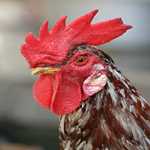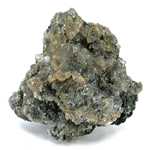- Learn English
-

Learn grammar
-

List of words
-

Study your cards
-

Hang On, Man!
-

Audio Books
-

More apps
- Recent searches
-
165th
-
prepossessing
-
disk
-
happiness
-
pocket-handkerchief
-
aalst
-
abukir bay
-
starlit
-
stagnant
-
mood
- Hide translation

 coxcomb
coxcomb /ˈkɑkskoʊm/
coxcomb
coxcomb /ˈkɑkskoʊm/
noun
-
The fleshy red crest on the head of the domestic fowl and other gallinaceous birds
 (
cockscomb
, coxcomb
, comb
)
(
cockscomb
, coxcomb
, comb
)
the fleshy red crest on the head of the domestic fowl and other gallinaceous birds
 The comb on the rooster is one of its most distinguishable features.
The comb on the rooster is one of its most distinguishable features.
The comb on the rooster is one of its most distinguishable features.

-
A cap worn by court jesters; adorned with a strip of red
 (
cockscomb
, coxcomb
)
(
cockscomb
, coxcomb
)
a cap worn by court jesters; adorned with a strip of red

-
A conceited dandy who is overly impressed by his own accomplishments
 (
cockscomb
, coxcomb
)
(
cockscomb
, coxcomb
)
a conceited dandy who is overly impressed by his own accomplishments

 mercurous chloride
mercurous chloride /mɜːrˈkʊrəs ˈklaɪrɔɪd/
mercurous chloride
mercurous chloride /mɜːrˈkʊrəs ˈklaɪrɔɪd/
noun
-
A tasteless colorless powder used medicinally as a cathartic
 (
calomel
, mercurous chloride
)
(
calomel
, mercurous chloride
)
a tasteless colorless powder used medicinally as a cathartic


 Greater London
Greater London /ˈɡreɪtər ˈlʌndən/
Greater London
Greater London /ˈɡreɪtər ˈlʌndən/
noun
-
The capital and largest city of England; located on the Thames in southeastern England; financial and industrial and cultural center
 (
British capital
, capital of the United Kingdom
, Greater London
, London
)
(
British capital
, capital of the United Kingdom
, Greater London
, London
)
the capital and largest city of England; located on the Thames in southeastern England; financial and industrial and cultural center
 They explored the bustling streets of London, visiting iconic landmarks like the Tower of London.
They explored the bustling streets of London, visiting iconic landmarks like the Tower of London.
They explored the bustling streets of London, visiting iconic landmarks like the Tower of London.


 Romanesque
Romanesque /ˌroʊməˈnɛsk/
Romanesque
Romanesque /ˌroʊməˈnɛsk/
noun
-
A style of architecture developed in Italy and western Europe between the Roman and the Gothic styles after 1000 AD; characterized by round arches and vaults and by the substitution of piers for columns and profuse ornament and arcades
 (
Romanesque
, Romanesque architecture
)
(
Romanesque
, Romanesque architecture
)
a style of architecture developed in Italy and western Europe between the Roman and the Gothic styles after 1000 AD; characterized by round arches and vaults and by the substitution of piers for columns and profuse ornament and arcades


